Hydraulic disc brakes rely on the use of specific fluid to function properly. When you pull the lever, the fluid in the system causes the pads to contact the disc rotor and bring you to a safe stop.
There are two types of brake fluid used on bicycle brakes – mineral oil and DOT fluid.
It is crucial you use the fluid specified by your brake manufacturer. Failure to do so will result in premature brake failure.
Here, we’ll explain the different types of brake fluid in more detail, what systems they're used in and answer some common questions on the fluids.
What is the role of brake fluid?

When you actuate the brake lever, a piston in the lever is depressed, sending fluid down the hydraulic hose to the brake caliper. This forces the pistons to move out from their housing in the caliper (known as the bores). The brake pads are secured against the pistons, so when the pistons move the brake pads then contact the disc rotor.
When you let go of the lever, the fluid moves back into the reservoir.
Brake fluid needs to be able to withstand high temperatures and typically has a high boiling point, far above what a brake would be subject to in normal conditions.
Brake fluid is also incompressible, helping to ensure that all the power from the lever is transferred to the pads.
A hydraulic braking system offers better modulation compared to mechanical cable-operated disc brakes, or rim brakes.
Because a hydraulic system is sealed and there are no cables to stretch, it offers more reliable braking. The fluid held in the lever reservoir effectively tops the system up over time as the brake pads wear down, so that braking is consistent.
This increased modulation and control over how much brake force is exerted depending on how far you pull the lever also means you stand less chance of locking up your wheel when you use the brakes.
What is mineral oil?

‘Mineral oil’ is a vague and unregulated term that doesn’t refer to one specific fluid.
All manufacturers that use mineral oil use fluid of their own variety.
Advantages and disadvantages of mineral oil
The advantages of mineral oil are that it tends to last longer and it's not corrosive to your bike’s paintwork. That said, if any does manage to get onto a component or paintwork, you should still wipe it off with isopropyl alcohol and a rag.
It also shouldn’t cause irritation to your hands if any mineral oil were to accidentally get on them, but we recommend wearing eye protection and gloves when bleeding your brakes to be safe.
The disadvantage of mineral oil is that it's unregulated and as a result, not all mineral oils are created equal.
This means you should avoid mixing mineral oils and you’ll normally need to buy it from a local bike shop or online bicycle retailer, unlike DOT, which is more readily available given it's used in the automotive industry.
However, the fact that it’s unregulated could be viewed as an advantage to the manufacturer because it means they have full control over the process of manufacturing their brake fluid.
Additionally, although mineral oil is not hygroscopic (meaning it doesn’t absorb moisture from the air), when water gets into the system, it will tend to pool at the caliper. This decreases braking performance.
Which brands use mineral oil?
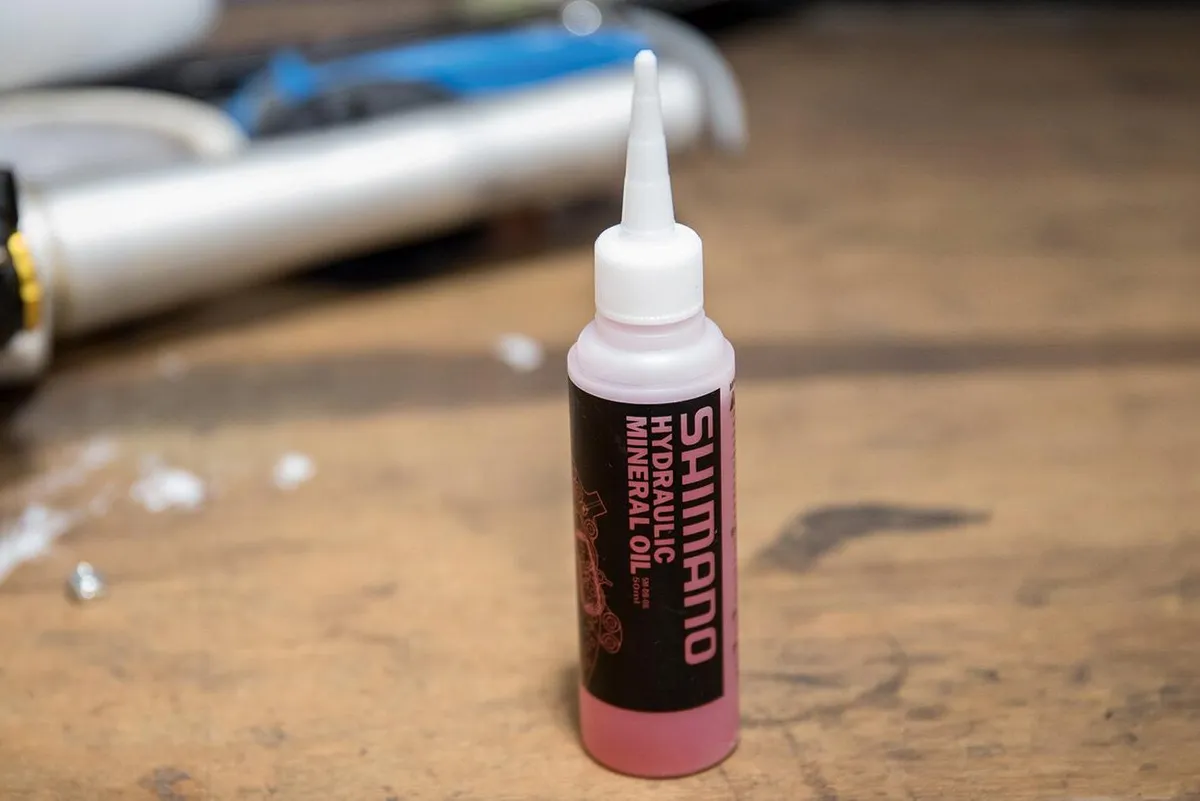
Shimano, Magura and Campagnolo are the big three manufacturers that use mineral oil. Some Formula brakes also use it and SRAM has now launched a mineral oil brake called the DB8, although the brand otherwise uses DOT fluid.
Clarks, Promax and Tektro / TRP also use mineral oil.
Shimano
Shimano uses mineral oil of its own variety that is compatible across all of its brakes and is a purple or red colour.
Shimano says you should only use its own mineral oil and using anything else will not only void the warranty but will destroy the seals used in the system.
Magura
Magura uses mineral oil of its own variety called ‘Royal Blood’, which is blue in colour.
Campagnolo
On Campagnolo’s original road groupsets, the brand used Magura’s Royal Blood mineral oil (rebranded as Campagnolo).
On the Italian brand’s Ekar brakes, it introduced its own mineral oil, which is red in colour. Campagnolo will be using this fluid on all of its hydraulic disc brakes going forward.
It's still compatible with Magura Royal Blood, but if you're going to use it, make sure you flush all of the red fluid out of the system first.
SRAM
While SRAM’s brakes have historically used DOT fluid, the brand recently introduced the DB8, which uses mineral oil instead. The brake is marketed as a mineral oil alternative to the Code (its downhill brake), but SRAM says it doesn’t pack quite as much power due to the change in fluid.
SRAM developed its mineral oil in collaboration with Maxima. The brand says it doesn’t absorb water, and doesn’t need to be changed or bled as regularly as DOT 5.1.
What is DOT fluid?
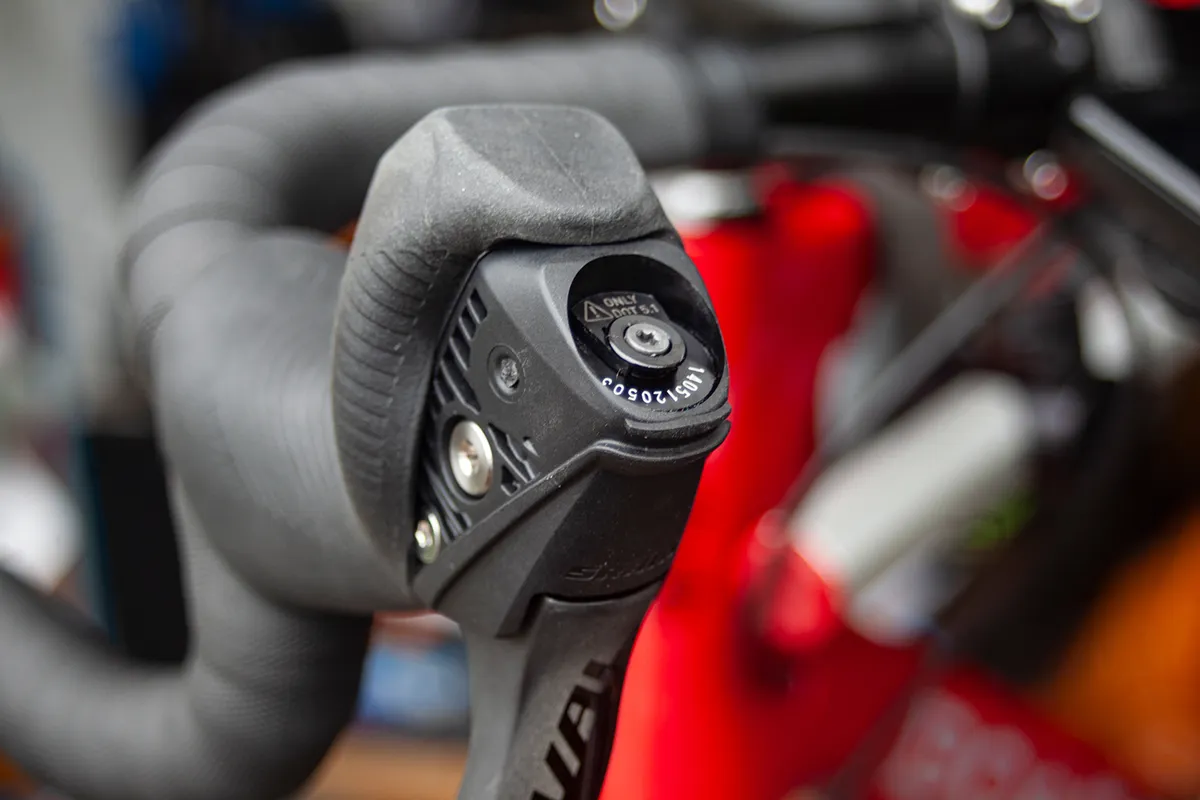
DOT fluid is the other main type of brake fluid. Unlike mineral oil, it’s regulated, and is used in the automotive industry. It gets its name from the ‘Department of Transport’. There are typically four types of DOT fluid in order of boiling point – DOT 3, DOT 4, DOT 5 and DOT 5.1.
DOT 5 is not used on bicycle brakes because it’s silicon-based, whereas the other fluids are glycol-based, and using DOT 5 would cause the seals to swell.
Most brands tend to use DOT 4 or DOT 5.1 due to their higher boiling points, with 5.1 the pinnacle.
Advantages and disadvantages of DOT fluid
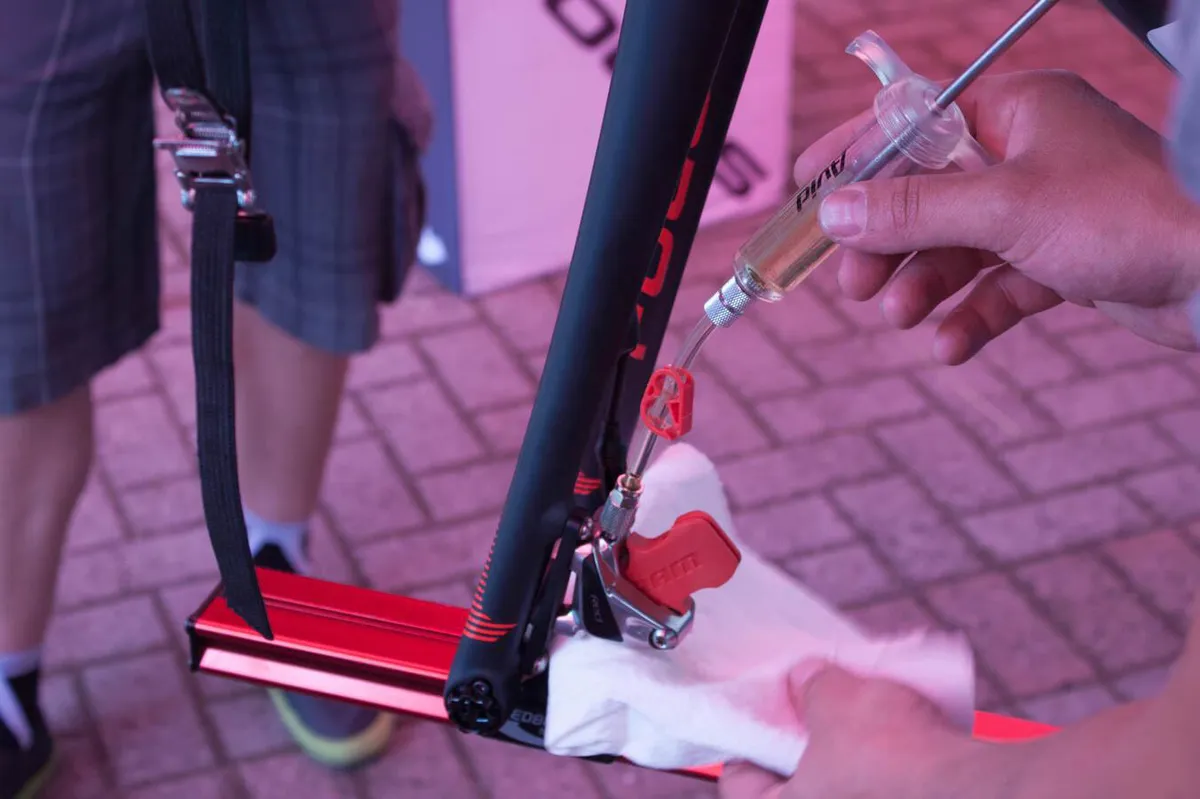
The main advantage of DOT fluid is it’s widely available and not only from bike shops or specialist online retailers, because it's also used in the automotive industry. It’s also generally cheaper than mineral oil.
The chief disadvantage of DOT fluid is that it is hygroscopic, which means it absorbs water, unlike mineral oil.
The boiling point lowers over time, as more moisture is let in and your brake performance suffers, leading to reduced stopping power and possible brake fade.
This is why it’s important to bleed your brakes at least once a year to prevent these issues.
The minimum boiling point of DOT 5.1 fluid is 270 degrees celsius when dry and 190 degrees celsius when wet (ie. some water has ingressed into the system).
While your brakes are very unlikely to ever reach these pressures, there is an increased chance of brake fade when the fluid has ingressed water over time and the system is being heated up, for example on a long Alpine descent, compared to when it has been newly bled.
DOT fluid is said to generally let in two to three per cent of its volume in water a year, although this could be higher if you live in particularly humid conditions.
Although DOT fluid lets in moisture, the water doesn’t pool in one place and is instead dispersed throughout the entirety of the fluid, which maintains good performance.
DOT fluid is also corrosive and can damage paintwork. You should take care when bleeding a brake with the fluid and wear suitable protective eyewear and gloves, as well as wiping away any fluid that spills immediately with isopropyl alcohol.
Which brands use DOT fluid?
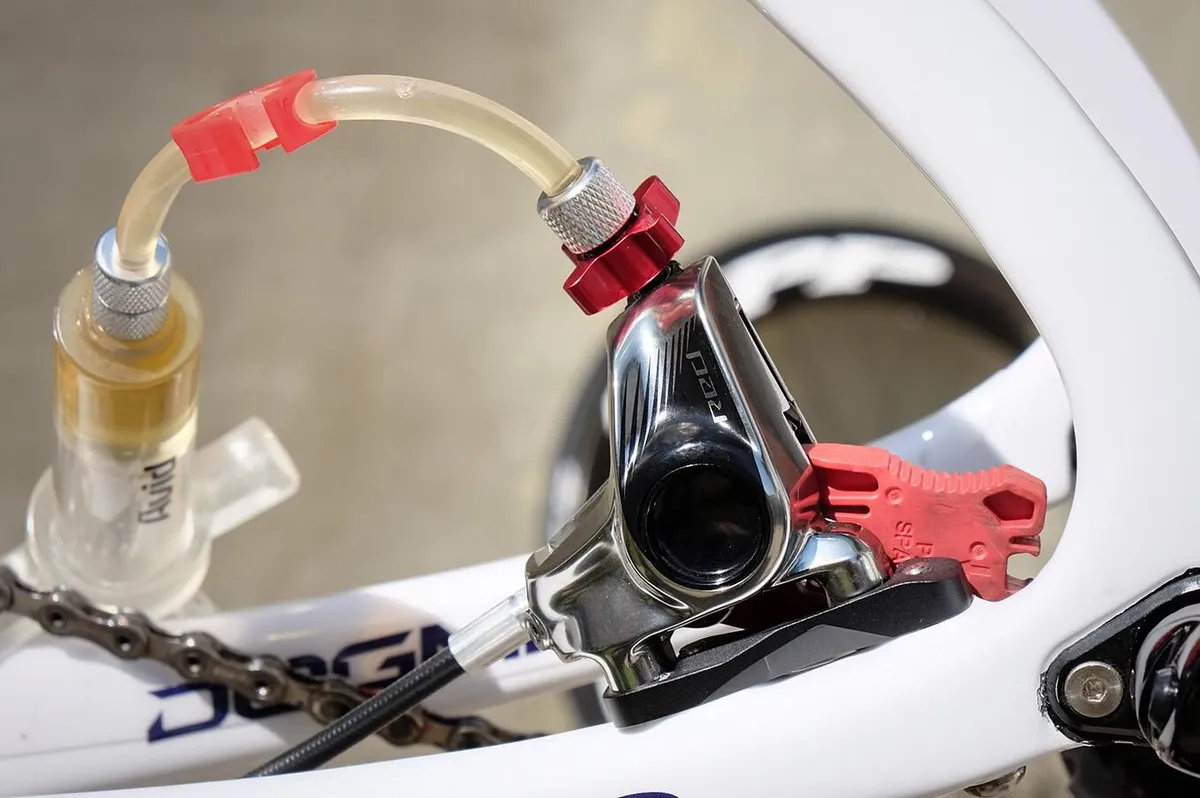
SRAM and Hope are the main brands to use DOT fluid. It is also used by after-market brake manufacturer Hayes and in some Formula brakes.
SRAM
SRAM uses DOT 5.1 fluid on its brakes. You can also use DOT 4, which has a lower boiling point.
Hope
Hope brakes also use DOT 5.1 fluid.
Can I mix and match fluids?
No. You should never, under any circumstances, mix brake fluids because it will degrade the seals and lead to premature brake failure.
If you are unsure what fluid your brakes use, it will typically be written somewhere on the lever or caliper. Alternatively, you can consult your manufacturer or your local bike shop.
How long can I store brake fluid?
You can keep mineral oil on the shelf indefinitely, even if the seal is opened, and braking performance won’t be decreased when it’s used.
DOT fluid attracts moisture as soon as you open the bottle. Consider buying small quantities, such as 100ml, which should be good for two to three bleeds. SRAM says the shelf life is generally up to one year.
How often should I bleed my brakes?
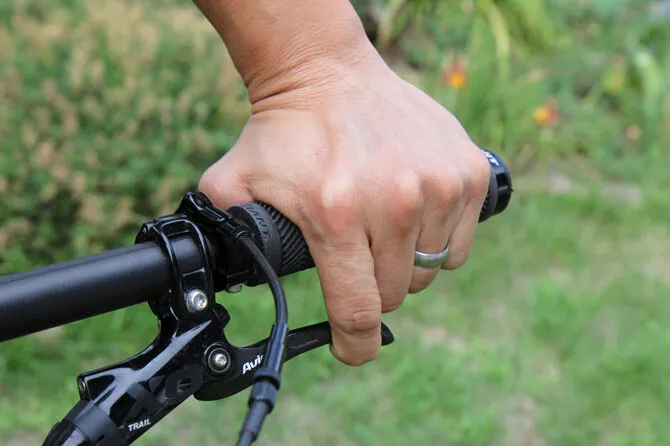
You should generally bleed your brakes once a year or when the brake lever feels spongy.
The systems can let in water, moisture and contaminants, and it's not possible to tell if the fluid has discoloured without bleeding, which introduces new fluid into the system.
If you notice your brake fluid is discoloured when bleeding, you should close the syringe, replace the fluid and repeat until there is no more discoloured fluid coming out into the syringe or bleed bucket.
You must use specific bleed kits for either fluid and you shouldn’t mix fluids in the same kit.
